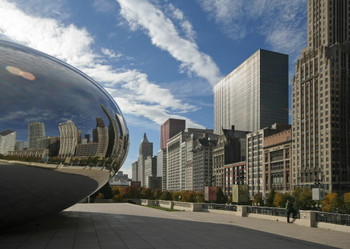Most endangered places, U.S., 2008
Last week, I blogged about the DC list of the most endangered places. The National Trust for Historic Preservation released its national list for 2008 earlier in the week:
- Michigan Avenue Streetwall in Chicago:
- Boyd Theater, Philadelphia: Vacant Art Deco movie palace.
- California’s State Parks: Many may close because of state budget cuts.
- Charity Hospital and adjacent neighborhood, New Orleans: Historic hospital closed after Hurricane Katrina.
- Great Falls Portage, Great Falls, Mont.: Landscape along Lewis and Clark Trail might be marred by power plant.
- Hangar One, Moffett Field, Santa Clara County, Calif.: Dome-shaped hangar built in 1932 to house U.S. Navy dirigibles isn’t being preserved.
- The Lower East Side, New York: Development threatens theaters, other remaining structures in this cradle of immigration.
- Peace Bridge Neighborhood, Buffalo: Local bridge authority wants to widen Peace Bridge, eliminate historic homes.
- The Statler Hilton Hotel, Dallas: Once-modern hotel, now 52 years old, sits vacant.
- Sumner Elementary School, Topeka, Kan.: City Council has authorized demolition of school central to U.S. Supreme Court’s desegregation ruling.
- Vizcaya and the Bonnet House, Fla.: Miami museum and Ft. Lauderdale house museum threatened by out-of-scale high-rises.
NTHP press release: 2008’s 11 Most Endangered Historic Places Announced
-------------
The one thing we have to remember is that we need to strengthen the links between these places and the issues they represent, and situations in various places across the country. For example, the designation of the Michigan Avenue Streetwall as threatened is an inspired listing. However, many similar places in strong real estate markets are being threatened similarly. Now it's not Michigan Avenue, but a stretch of historic(ally eligible for listing) buildings at the northwest corner of North Capitol and New York Avenue are slated to be demolished. It ends up being death by 1,000 cuts. Downtown DC for the most part has already been lost.
See Blair Kamin's architecture blog (he is the beat writer, Pulitzer Prize winner, for the Chicago Tribune) entry on "Chicago's Michigan Avenue 'streetwall' named to list of nation's 11 most endangered places."

Michigan Avenue streetwall. Chicago Tribune photo.
Similarly, what state (or the National Park Service) _isn't_ seriously disinvesting in public parks? It's a disgrace for the most part, in most cities and state, and really needs to be addressed--it's not just a problem in California. It's ironic that in some respects the formalized profession of urban planning got its start and developed around the creation of public parks such as Central Park in New York City.
Similarly/2, other state and city listings of endangered places are useful guides to people elsewhere. Preservation Chicago's list is always thought-provoking.



0 Comments:
Post a Comment
<< Home